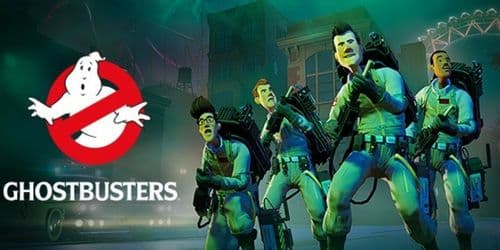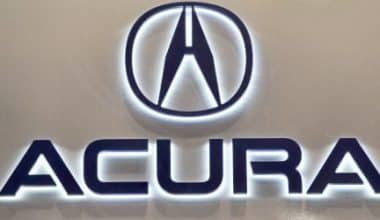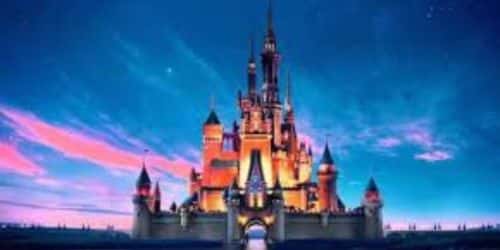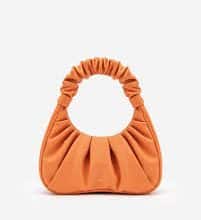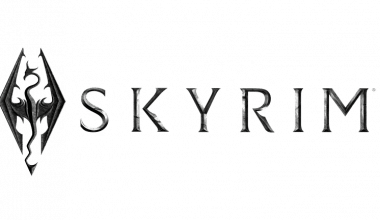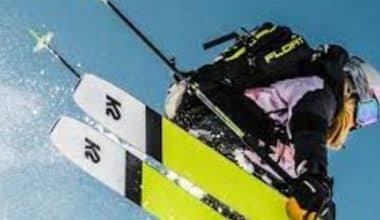Popular media brand Ghostbusters debuted in the United States in the mid-1980s. The plot of the franchises established by Dan Aykroyd and Harold Ramis centers around a group of characters that travel throughout New York City in an effort to vanquish a ghost. This article talks about the Ghostbusters logo.
Overview
It is an American comedy horror film first released in 1984. On June 16, 1989, the sequel Ghostbusters II premiered. Reading an essay on how quantum physics inspired Dan Aykroyd to create this mind-blowing film.
Those involved with the film’s production and release released it alongside the film’s visual presentation on June 8, 1984. A white ghost and text make up the Ghostbusters logo. The designer channeled the brand’s spirit by depicting a valiant ghost imprisoned in an envelope. The letter O has been replaced visually with a red “no” symbol.
The new Ghostbusters logo is virtually identical to the original. Nevertheless, the most noticeable difference is the hue. Unlike the original wordmark, which looked well in black, the new one showcases itself best in white. In sum, it is one of the most famous and successful logos in the world.
There is no doubt that the Ghostbusters logo is just as spectacular as the film itself. Ghostbusters was made for over $280 million, with a budget of around $30 million. After Beverly Hills Cop, it became the highest-grossing film in history thanks to its phenomenal financial success. Compared to Indiana Jones and the Temple of Doom, it far exceeds
As a result, it was the first comedy film to feature high-priced CGI. The Ghostbusters brand has grown into a multibillion-dollar industry because of investments in other media such as comic books, video games, anime, and film.
Explaining the Ghost in the Ghostbusters Logo
Dan Aykroyd and co-star John Belushi were forced to revise the script for the Ghostbusters movie because the initial premise was too wild and wide. This is to make it realistic and under budget.
In the 1980s, when Ghostbusters was developed, franchises weren’t the norm, so nobody involved in the production planned on developing a follow-up film. Five years after the original film’s release, the sequel arrived thanks to the success of a cartoon adaptation of the story. The original film and its accompanying animated series had garnered a lot of attention, but at this point, that attention had begun to wane, and fans weren’t as pumped up about the sequel.
After the success of the second film, Bill Murray decided he no longer wanted to be a part of the Ghostbusters film series and opted out of appearing in Ghostbusters 3. The 2016 Ghostbusters reboot, starring Mellisa McArthur and Kate McKinnon, was the first in the franchise to have female stars. Many fans are familiar with the franchise’s backstory, but they don’t realize the ghost in the Ghostbusters emblem actually has a name.
Additional Details
During the early stages of development, Dan Aykroyd and Ivan Reitman came up with the term “Mooglie” for the ghost that would become the franchise’s iconic logo. Michael Gross created the ghost and later returned to revamp the movie’s logo. Although Mooglie is not among the film Ghostbusters, he does make an appearance in the film’s animated prequels.
Although a living Mooglie doppelganger appeared in an episode of season three, Mooglie didn’t get his due until the 2016 relaunch. You will notice the antagonist of the film changing into the Mooglie emblem in the film’s climactic scene. Mooglie wasn’t a central character in any of the films, and he didn’t stick around thereafter, but there’s no doubting his significance to the brand and the iconic emblem that represents it.
Its History
Ghostbusters’ iconic logo, designed in the 1980s, continues to serve as the basis for the franchise’s visual identity. However, the logo undergoes minor stylizations with each new release, be it a film, a sequel, or an animated film, to better fit the new settings and aesthetics.
1984 – 2016
The Ghostbusters logo is a cartoon ghost bursting through the circle of a prohibition-era stop sign. Typically, the image is set against a black or other dark background, although it is also sometimes used as a replacement for the letter “O” in a logotype. In this instance, the letters are rendered in black using a bold, classic typeface with thick lines. The white ghost is given a tiny black edge so that it stands out against the white background.
2016 – Today
There was an update to the classic Ghostbusters logo for the 2016 film. The logo expanded and became more up-to-date. Because of the use of gradient colors and a thin, confident silver outline that gives the impression of depth, the red sign had a glossy, eye-catching finish. The logo’s ghost protagonist had its outline sharpened and bolstered, and the color scheme went gradient.
With the “O” remaining replaced by the franchise’s insignia, the previously black logotype in an elegant serif typeface has been updated to a bold square inscription. The letters went from being predominantly black to predominantly white, and they had a thin black outline and a slight gray shadow, which gives the visual identity a more three-dimensional appearance and injects more life and movement into the overall composition.
Style and Scheme
The primary Ghostbusters logo features large, bold uppercase letters set in a modern, sans-serif typeface with slightly rounded bar ends. The insignia in question uses a font that is most similar to NS Mudolf Sans or Antique Olive Discaps Medium, with the co-tours of the characters tweaked and the letters shadowed to achieve the desired effect.
The whites and grays in the Ghostbusters logo represent the ghosts, while the red of the prohibition sign represents danger and power, making the color scheme an accurate reflection of the film’s plot and the spirit of the franchise as a whole. The delicate black shadow cast by the capital letters, as well as the thin black contours of the elements, ensure that the Ghostbusters logo is legible against any background.
- The color black: The original logo’s character was preserved by this color choice. A few of its feelings are terror, death, and bad will. To be sure, there are other explanations besides animosity. Strength, grace, and prestige are just some of the good vibes that it can spread.
- The Color White: The designer of the modern logo did a whitewash on both the wordmark and the ghost. White is universally understood to be a symbol of purity, light, and innocence. In addition, it can send signals of security, protection, and modesty. In every case, the use of black and white creates a striking contrast that helps maintain equilibrium.
- As for the color red, it means: The color denotes a no-signage zone. This fiery shade is a symbol of ardor, attraction, and yearning. But red can also mean rage, violence, and tension. The white ghost stands out more due to the red circle surrounding it.
Aspects of the Ghostbusters Logo
Expert craftsmanship is evident in the Ghostbusters logo. The trademark consists of a wordmark, an icon that looks good, and the right colors.
The Ghostbusters Logo, Its Form, And its Symbols
A Ghost
The Ghostbusters logo’s primary visual motif is a white ghost. A ghost is a common literary symbol for mystery, indestructibility, and the unknown. They also use it to communicate horror, dread, and panic.
The Letter O
In the English alphabet, O comes in at position 15. This is a divine letter that stands for possibility, hope, power, and authority. In contrast, the Ghostbusters logo features a non-sign symbol in its place. The universal sign here represents caution, safety, and health issues. This implies that the famous red sign means there is no ghost.
Why Is the Ghostbusters Emblem So Effective?
#1. The Logo Looks Good
The graphic figure is appealing and piques interest. You can’t help but give it a second look if you happen to see it. This quality both endears it to its existing fanbase and encourages newcomers to stick around and admire it in secret. You should keep in mind that a logo that is both unique and visually appealing will give your company a leg up on the competition.
#2. It’s Readable
Professionals in the field of graphics have deemed this piece of advice crucial. That’s why the Ghostbusters logo is a clear, legible font. All seriousness aside, this custom sans serif font performs admirably in a variety of contexts without compromising its integrity. If you follow this piece of advice, your logo will look great on any marketing medium.
#3. It’s Easy to Remember the Logo
Always go for the simplest logo option when creating a brand identity. Getting there might leave you wondering. A simple emblem, on the other hand, relies on a smaller number of design elements to convey its meaning.
#4. There Is No Inconsistency In The Logo
One of the greatest strengths of any business is the loyalty of its customers to the brand. In addition, gaining such a standing requires considerable effort and time. Keep that in mind as you develop your brand’s visuals. Consistent with this, the Ghostbusters emblem has acquired a devoted following. Since 1984, only two logos sharing these characteristics have been used.
Designer Behind the Ghostbusters Iconic Logo
Ghostbusters co-writer Dan Aykroyd came up with the movie’s revolutionary “1984” logo. Dan came up with the concept for the film’s logo, but Michael Gross, a brilliant graphic designer, brought it to life.
Michael C. Gross was a film producer, an artist, and an illustrator, and his contributions to Ghostbusters have endured for over three decades. Dan may have been the creative force behind the logo’s concept, but Michael was the one to flawlessly implement Dan’s ideas. A few people think that Michael got some assistance from another graphic designer.
On November 16, 2015, Michael lost his battle with cancer. After 30 years of battling cancer, the artist received a terminal diagnosis in 2014 and made the decision to stop treatment. Michael “went down fighting,” remaining courageous until the end and making the most of his time on earth with a memorable “Flip Cancer” campaign. When asked, he said that his ultimate purpose in life was “to have fun and do new things.” Although Michael is no longer with us, his incredible and meticulous work lives on in the Ghostbusters logo and elsewhere. His logo has become instantly recognizable and has ensured the continued success of his creation.
What Is the Name of the Ghost in the Ghostbusters Logo?
The No-Ghost Sign, the Ghostbusters’ official emblem, was a marketing gem for the first film. They can still use this strategy again with the 1989 Batman film, which featured the Batman logo prominently in almost all promotional materials. Some fans may not realize that during production, Ivan Reitman and Dan Aykroyd gave the ghost in the Ghostbusters logo the name Mooglie.
Artist Michael C. Gross, who also worked as an executive producer on The Real Ghostbusters and redesigned the Ghostbusters II logo, created the sign. Even though the Ghostbusters logo’s Mooglie doesn’t make a physical appearance in the film, he develops a distinct personality throughout the course of the story. Frank Welker, who also voiced Optimus Prime in the Transformers animation, occasionally provided his voice for him in bumpers for The Real Ghostbusters cartoon. In season 3, they had to devote one episode to a ghost named the Copycat who transforms into a human Mooglie.
Additional Details
Mooglie’s big moment came in the 2016 Ghostbusters reboot when main antagonist Rowan metamorphosed into a massive version of the logo in the film’s climactic battle. Patton Oswalt (The Secret Life of Pets 2) provided his voice in Ghostbusters VR: Now Hiring, and also appeared as a ghost that can be captured in Ghostbusters World, an augmented reality game. Ivan Reitman recommended including Mooglie as a guide for gamers while they explore famous locales in this virtual reality game.
Since Mooglie technically only appeared in the movies as a form of Rowan and the events of Ghostbusters VR – Now Hiring are scarcely considered canon, his canon status is disputed. Interestingly, in one issue of the comic book series Ghostbusters 101, Ray does reveal the name of the spirit behind the Ghostbusters emblem, although the canonicity of this series is also up for debate.
What Does the Ghostbusters Symbol Mean?
The logo is a result of the absence of European symbols. Aside from being in the upper left corner of Europe, the logo appeared in the upper right corner of every other region. The logo was created by Dan Aykroyd and used in the first draft of the Ghost Smashers screenplay. Michael C. Gross was responsible for the overall art direction and design.
The No Ghost emblem was also dubbed “Mooglie” by Ray Stantz, as stated in Ghostbusters 101 #3. The Slimers from The Real Ghostbusters and Extreme Ghostbusters wear bibs with the Icon Ghost on the cover of Ghostbusters Crossing Over #4.
Who Came up With the Ghostbusters Logo?
Michael C. Gross, a film producer, and graphic designer who designed the “Ghostbusters” logo and worked as an art director for National Lampoon in the early 1970s, passed away on Monday at his home in Oceanside, California.
What is Ghostbuster Slime Called?
Psychomagnotheric Slime, also called Mood Slime and Psycho-Reactive Slime is a powerful psycho-reactive plasm in both Ghostbusters II and Ghostbusters: The Video Game. Its reactions depend on how happy or sad its human hosts are.
What is Slimer’s Name?
It is never revealed what Slimer’s name is in the Ghostbusters script or on-screen (the term “slimers” is used to identify a kind of ghost). The team dubbed the monster “The Onionhead Ghost,” and Steve Johnson is billed as “Onionhead” in the film’s closing credits.
Is the Ghostbusters Logo Copyrighted?
Justia Trademarks 040107, 241716, 270305, GHOSTBUSTERS Trademark of Columbia Pictures Industries, Inc., Registration No. 3085088, Serial No. 78611993. Species from fiction, including ghosts, aliens, and superhumans. Symbol of worldwide banishment.
How Do You Draw the Ghostbusters Symbol?
Learn the ins and outs of sketching the Ghostbusters logo with this easy-to-follow step-by-step guide.
Who Designed the Ghostbusters Logo?
Michael C. Gross, a film producer, and graphic designer who designed the “Ghostbusters” logo and worked as art director for National Lampoon in the early 1970s, passed away on Monday at his home in Oceanside, California. He was 70. Dylan Gross, his son, stated that cancer was the reason of death.
In 1970, a year after National Lampoon’s creation, Mr. Gross replaced a loose collaboration of underground artists known as Cloud Studios as the magazine’s art director. He offered the magazine a new, cutting-edge graphic aesthetic and a deadpan, laser-focused parody style that catapulted it to prominence in popular culture.
In a nod to Norman Rockwell, his debut cover, for the November “nostalgia” issue, depicted an old-fashioned barber giving a buzz cut to a confused hippy holding a peace pendant and a string of beads. The cover of the “death” issue, published in January 1973, depicted a hand holding a gun to the head of a cute little black and white puppy, which had its eyes darting nervously toward the barrel. There was a threat on the cover: “We’ll Kill This Dog if You Don’t Buy This Magazine.”
The American Society of Magazine Editors named that layout the eighth finest magazine cover of the preceding four decades in 2005.
The studio had not yet acquired the rights to the “Ghostbusters” brand when the film’s creators came up with the logo, which features a blobby white creature bursting from a red worldwide “No” sign, to use on a teaser poster. Mr. Gross, the film’s art director and associate producer, collaborated with Brent Boates, one of his artists, to create a concept artwork that would convey the story of the film without a title.
Additional Details
In no time at all, the ghost had become one of the most iconic and widely reproduced logos in history. Mr. Gross told The Daily Telegraph of London last year that he knew the image had caught on when he spotted it on the nose of a B-52 bomber at an air show, a realization he claims to have had years earlier.
After his parents divorced when he was young, Michael Curtiss Gross moved from Seattle to Newburgh, New York, where he spent his childhood. He has lived in Seattle since he was a teenager. He was a huge fan of slasher and science-fiction movies when he was a kid. At the age of 16, his paintings of a skeleton and a dragon from “The 7th Voyage of Sinbad” appeared in the magazine Famous Monsters of Filmland.
However, he wed his high school sweetheart, Glenis Wootton, at the age of 17, and she passed away in 2006. He left behind a daughter, Gina Misiroglu, and three grandkids, in addition to his son (who adopted a new last name).
He began his art education at Brooklyn’s Pratt Institute, but dropped out before graduating to take an entry-level design position at Cosmopolitan. After working at Medical Economics, he accepted an invitation from fellow Pratt student Robert Pellegrini to move to Mexico City to create posters for a cultural program associated with the upcoming 1968 Summer Olympics.
The Rest of the Story
During his first meeting with National Lampoon’s top editor, Douglas Kenney, Mr. Gross criticized Cloud Studios’ work on a set of absurd postage stamps for an earlier issue of the magazine. He explained the motivation behind the project, saying that the stamps would be successful if they resembled actual postage. It’s twice as funny then. And they did; that was my hope.
During his time at Pratt, Mr. Gross collaborated with his roommate, David Kaestle, to create parody versions of menus, advertisements, invitations, and bumper stickers. For the 1956 nostalgia issue, they created a spoof high school yearbook that foreshadowed the now-iconic “National Lampoon 1964 High School Yearbook Parody.” Mr. Gross told Rick Meyerowitz, author of the history of National Lampoon, “Being at National Lampoon was like being at Sun Records.”
In 1974
Gross left the magazine in 1974 to form the design firm Pellegrini, Kaestle & Gross, whose clients included Simon & Schuster, Jim Henson, and Mobil Oil. The company also worked on unique projects for National Lampoon. They had to spend a year designing Christmas cards and books for National Lampoon devotee John Lennon and his wife, Yoko Ono.
While living in Hollywood, he developed “Heavy Metal,” an animated picture based on the National Lampoon sister journal of the same name. He had previously worked as the art director of Esquire in the late 1970s. Both the Griswold family station wagon and the Wally World moose from “National Lampoon’s Vacation” were designed by him, though he received no credit for either.
He worked as a producer on a number of movies, including “Beethoven,” “Kindergarten Cop,” and “Dave,” as well as “Ghostbusters II,” whose logo he changed to feature a ghost holding up two fingers. The animated TV series “The Real Ghostbusters” was also developed by him. He uprooted to Italy in 1995 to pursue art there. Later in life, he worked as a curator at the Oceanside Art Museum in California.
Brief Overview of the Ghostbusters Films
The Ghostbusters movies are an American film series about paranormal investigators. Fans of action, horror, and comedy will enjoy the films shot in New York and Los Angeles. Dan Aykroyd and Harold Ramis wrote the movie, with Ivan Reitman in charge of production.
Ghostbusters was first shown to the public on June 8, 1984. Bill, Dan, Harold, and Rick all made appearances. Sigourney, Annie, William, and Ernie, among others, got the award. While Dan Aykroyd is famous for being the creative force behind Ghostbusters. He has a great nudge of supernatural claims.
But he inherited a taste for ghost hunting and fighting from his relatives. For example, one parent witnessed a ghost, another used a radio to communicate with the dead, and yet a third wrote a book titled “A History of Ghosts.” In addition, the great-grandfather was a well-known spiritualist in the family.
People liked Ghostbusters, and it was the year’s second-highest-grossing movie because of how well it did. The movie made about $280 million in its first weekend, making it the most successful comedy ever.
Ghostbusters: Afterlife, a sequel to the 1984 movie, will finally come out on November 19, 2021, after a long wait. In addition to Jason Reitman, Gill Kenan also contributed to the script. Jason not only acted in the movie but also directed it.
The franchise has grown into a multibillion-dollar media conglomerate. Comics, board games, music, clothes, animation series, a haunted house, and video games are just some of the many things it produces. The Library of Congress put it in the National Film Registry in 2015 because of how important it was.
Conclusion
American comedy legends Dan Aykroyd and Harold Ramis created the Ghostbusters franchise in 1984. The show and comics are about a group of scientists who investigate reports of supernatural things happening in New York City homes and try to get rid of whatever is causing them. As a result of the success of the original film, “Ghostbusters” is now all over the world. In 2016, the sequel debuted.
Related Articles
- Home Business Ideas with Low Start Up Costs: Get the Top 20 Here (+ Easy Quick Tips)
- Entrepreneur ideas for 2023: See 30+ here (+ quick guide)
- Stock Market Movies: 20 Best Stock Market Movies Of All Time (updated)
- SNAPCHAT LOGO: History, Evolution, Controversies (Detailed Overview)
- GROSS PROFIT PERCENTAGE: Definition, Formula & How to calculate
